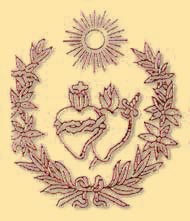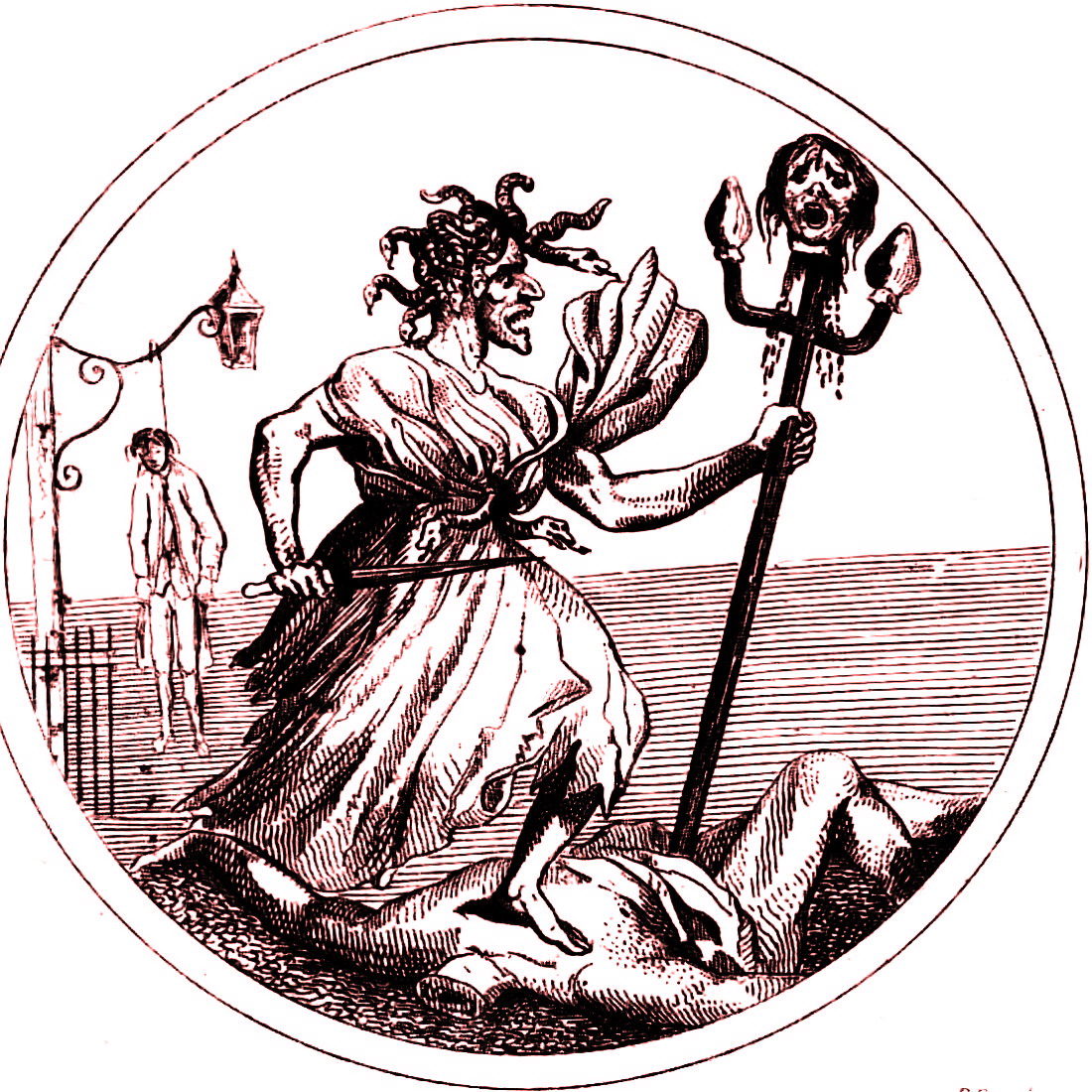|
Rose Philippine Duchesne
Rose Philippine Duchesne, RSCJ (; August 29, 1769 – November 18, 1852), was a French religious sister and educator whom Pope John Paul II canonized in 1988. A native of France, she immigrated as a missionary to America, and is recognized for her care and education of Indigenous American survivors of the United States Indian removal programs. Along with the founder, Madeleine-Sophie Barat, Duchesne was an early member of the Society of the Sacred Heart and established the congregation's first communities in the United States. She spent the last half of her life teaching and serving the people of the Midwestern United States, which was at that time considered the western frontier of the nation. Duchesne was beatified on May 12, 1940, and canonized on July 3, 1988. Life Early life Rose Philippine Duchesne was born in Grenoble, then the capital of the ancient Province of the Dauphiné in the Kingdom of France, the second of seven daughters, along with one son. Her father, Pier ... [...More Info...] [...Related Items...] OR: [Wikipedia] [Google] [Baidu] |
Society Of The Sacred Heart
The Society of the Sacred Heart of Jesus (; ), abbreviated RSCJ, is a Catholic centralized religious institute of consecrated life of pontifical right for women established in France by Madeleine Sophie Barat in 1800. History Madeleine Sophie Barat founded the Society of the Sacred Heart of Jesus in the wake of the French Revolution to provide educational opportunities for girls. The manner of life was to be simple without the prescribed austerities of the older orders, which would be incompatible with the work of education. In some houses the religious conducted just one school, but in several places, especially in the larger houses in cities there were at least two schools, a boarding school and a school for poor children. The first convent was opened at Amiens in 1801. In 1820 the French Government gave a run down property now known as Hotel Biron (current Rodin Museum) to the Society. Other houses were opened in Grenoble, Niort, Poitiers and Cuigniers. In 1826 the socie ... [...More Info...] [...Related Items...] OR: [Wikipedia] [Google] [Baidu] |
Day Of The Tiles
The Day of the Tiles () was an event that took place in the French town of Grenoble on 7 June 1788. It was one of the first disturbances preceding the French Revolution and is credited by a few historians as its start. Background Various economic crises induced the financial hardship that caused popular unrest in Grenoble. The causes of the French Revolution, sources of the French Revolution affected all of France, but matters came to a head in Grenoble first. A depressed demand for luxury gloves (at the time one of Grenoble's major industries), left it heavily dependent on its status as the seat of the regional ''parlement'' for status and prosperity. However, Cardinal Étienne Charles de Loménie de Brienne, the Archbishop of Toulouse and ''Controlleur'' whom Louis XVI appointed on 8 April 1787, was attempting to abolish the parlements to work around their refusal to enact a new tax to deal with France's unmanageable public debt. Poor harvests, the high cost of bread, and t ... [...More Info...] [...Related Items...] OR: [Wikipedia] [Google] [Baidu] |
Enclosed Religious Order
Enclosed religious orders are religious orders whose members strictly separate themselves from the affairs of the external world. The term ''cloistered'' is synonymous with ''enclosed''. In the Catholic Church, enclosure is regulated by the code of canon law of the Catholic Church, canon law, either the 1983 Code of Canon Law, Latin code or the Code of Canons of the Eastern Churches, Oriental code, and also by the constitutions of the specific order.The Code of Canon Law, Canon 667 ff. English translation copyright 1983 The Canon Law Society Trust It is practised with a variety of customs according to the nature and charism of the community in question. This separation may involve physical barriers such as walls and grilles (that is, a literal cloister), with entry restricted for other people and certain areas exclusively permitted to the members of the convent. Outsiders may only temporarily enter this area under certain conditions (for example, if they are candidates for the o ... [...More Info...] [...Related Items...] OR: [Wikipedia] [Google] [Baidu] |
Romans-sur-Isère
Romans-sur-Isère (; ; Old Occitan: ''Romans'') is a Communes of France, commune in the Drôme Departments of France, department in southeastern France. Geography Romans-sur-Isère is located on the Isère (river), Isère, northeast of Valence, Drôme, Valence. There are more than 50,000 inhabitants in the urban area (if the neighboring town of Bourg-de-Péage is included). Romans is close to the Vercors Plateau, Vercors. Population Economy * Nuclear fuel manufacture (FBFC, Franco-Belge de Fabrication du Combustible), Framatome subsidiary. * Shoe manufacture (including Robert Clergerie) History *Historian Emmanuel Le Roy Ladurie wrote ''Carnaval de Romans'' (1980) a microhistory, microhistorical study, based on the only two surviving eyewitness accounts, of the 1580 massacre of about twenty artisans at the annual carnival in the town. He treats the massacre as a microcosm of the political, social and religious conflicts of rural society in the latter half of the 16th century ... [...More Info...] [...Related Items...] OR: [Wikipedia] [Google] [Baidu] |
Visitandines
The Order of the Visitation of Holy Mary (), abbreviated VSM and also known as the Visitandines, is a Catholic Church, Catholic religious order of Pontifical Right for women. Members of the order are also known as the Salesian Sisters (not to be confused with the Salesian Sisters of Don Bosco) or, more commonly as the Visitation Sisters. History The Order of the Visitation was founded in 1610 by Francis de Sales and Jane Frances de Chantal in Annecy, Haute-Savoie, France. At first, the founder had not a religious order in mind; he wished to form a congregation without external vows, where the cloister should be observed only during the year of novitiate, after which the Religious sisters, sisters should be free to go out by turns to visit the sick and poor. The Order was given the name of The Visitation of Holy Mary with the intention that the sisters would follow the example of Virgin Mary and her joyful visit to her kinswoman Elizabeth (biblical figure), Elizabeth, an event ... [...More Info...] [...Related Items...] OR: [Wikipedia] [Google] [Baidu] |
Reign Of Terror
The Reign of Terror (French: ''La Terreur'', literally "The Terror") was a period of the French Revolution when, following the creation of the French First Republic, First Republic, a series of massacres and Capital punishment in France, numerous public executions took place in response to the Federalist revolts, revolutionary fervour, Anti-clericalism, anticlerical sentiment, and accusations of treason by the Committee of Public Safety. While terror was never formally instituted as a legal policy by the Convention, it was more often employed as a concept. Historians disagree when exactly "the Terror" began. Some consider it to have begun in 1793, often giving the date as 5 September or 10 March, when the Revolutionary Tribunal came into existence. Others cite the earlier September Massacres in 1792, or even July 1789 when the first killing of the revolution occurred. Will Durant stated that "strictly, it should be dated from the Law of Suspects, September 17, 1793, to the e ... [...More Info...] [...Related Items...] OR: [Wikipedia] [Google] [Baidu] |
Order Of The Visitation Of Holy Mary
The Order of the Visitation of Holy Mary (), abbreviated VSM and also known as the Visitandines, is a Catholic Church, Catholic religious order of Pontifical Right for women. Members of the order are also known as the Salesian Sisters (not to be confused with the Salesian Sisters of Don Bosco) or, more commonly as the Visitation Sisters. History The Order of the Visitation was founded in 1610 by Francis de Sales and Jane Frances de Chantal in Annecy, Haute-Savoie, France. At first, the founder had not a religious order in mind; he wished to form a congregation without external vows, where the cloister should be observed only during the year of novitiate, after which the Religious sisters, sisters should be free to go out by turns to visit the sick and poor. The Order was given the name of The Visitation of Holy Mary with the intention that the sisters would follow the example of Virgin Mary and her joyful visit to her kinswoman Elizabeth (biblical figure), Elizabeth, an event ... [...More Info...] [...Related Items...] OR: [Wikipedia] [Google] [Baidu] |
President Of France
The president of France, officially the president of the French Republic (), is the executive head of state of France, and the commander-in-chief of the French Armed Forces. As the presidency is the supreme magistracy of the country, the position is the highest office in France. The powers, functions and duties of prior presidential offices, in addition to their relation with the prime minister and government of France, have over time differed with the various constitutional documents since the Second Republic. The president of the French Republic is the co-prince of Andorra, grand master of the Legion of Honour and of the National Order of Merit. The officeholder is also honorary proto-canon of the Archbasilica of Saint John Lateran in Rome, although some have rejected the title in the past. The current president is Emmanuel Macron, who succeeded François Hollande on 14 May 2017 following the 2017 presidential election, and was inaugurated for a second term on 7 May ... [...More Info...] [...Related Items...] OR: [Wikipedia] [Google] [Baidu] |
Jean Casimir-Perier
Jean Paul Pierre Casimir-Perier (; 8 November 1847 – 11 March 1907) was a French politician who served as President of France from June 1894 to January 1895. Biography Jean Casimir-Perier was born in Paris on 8 November 1847, the son of Auguste Casimir-Perier, the grandson of Casimir Pierre Perier, premier of Louis Philippe, and the great grandson of Claude Périer, one of the founders of the Bank of France. He entered public life as secretary to his father, who was Minister of the Interior under the presidency of Thiers. In 1874 he was elected General Councillor of the Aube ''département'', and was sent by the same ''département'' to the Chamber of Deputies in the general elections of 1876, and he was always re-elected until his presidency. In spite of the traditions of his family, Casimir-Perier joined the group of Republicans on the Left, and was one of the 363 on the Seize-Mai (1877). He refused to vote the "expulsion of the Princes" in 1883, and resigned as De ... [...More Info...] [...Related Items...] OR: [Wikipedia] [Google] [Baidu] |
Prime Minister Of France
The prime minister of France (), officially the prime minister of the French Republic (''Premier ministre de la République française''), is the head of government of the French Republic and the leader of its Council of Ministers. The prime minister is the holder of the second-highest office in France, after the president of France. The president, who appoints but cannot dismiss the prime minister, can request resignation. The Government of France, including the prime minister, can be dismissed by the National Assembly. Upon appointment, the prime minister proposes a list of ministers to the president. Decrees and decisions signed by the prime minister, like almost all executive decisions, are subject to the oversight of the administrative court system. Some decrees are taken after advice from the Council of State (), over which the prime minister is entitled to preside. Ministers defend the programmes of their ministries to the prime minister, who makes budgetary choices. ... [...More Info...] [...Related Items...] OR: [Wikipedia] [Google] [Baidu] |




